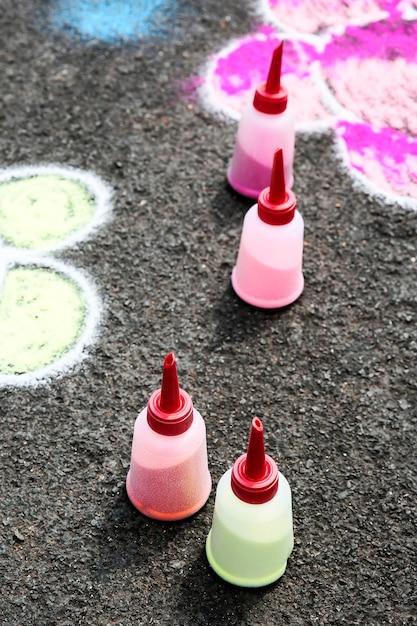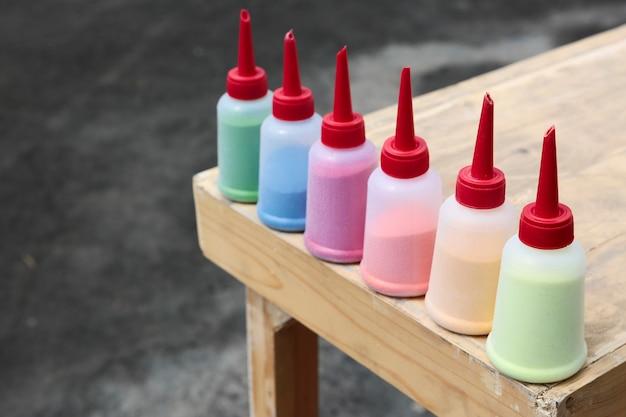Are you excited about giving your plastic items a fresh new look with a splash of color? Painting plastic is a fantastic way to revamp and transform the appearance of various objects, from garden pots to household decorations. However, if you want your paint job to last and look professional, you’ll need to properly prepare the plastic surface beforehand. That’s where sanding comes into play.
In this comprehensive guide, we’ll answer common questions like “Should you sand plastic before painting?” and “What grit should I sand plastic to before primer?” We’ll explore the benefits of sanding plastic, discuss the importance of using the right sandpaper grit, and provide step-by-step instructions on how to wet sand painted plastic. Additionally, we’ll uncover the secrets to getting paint to stick to plastic, reveal the best paint options for plastic, and much more.
So, grab your sandpaper and get ready to learn all about sanding plastic for painting. By following our expert advice and techniques, you’ll have the knowledge and confidence to tackle your plastic painting projects with ease.
How to Smooth That Plastic and Get Ready for Painting
So, you’ve got your hands on a plastic surface that’s begging for a fresh coat of paint. But before you can unleash your inner Picasso, you need to sand that plastic down to create a smooth canvas. Don’t worry, my friend, because I’ve got your back with this handy guide on how to sand plastic for painting.
What’s the Deal with Sanding anyway
Now, you might be thinking, “Why do I need to sand plastic? Isn’t it already smooth?” Well, my curious reader, let me enlighten you. Sanding helps create a rougher surface on the plastic, which in turn allows the paint to adhere better. Think of it like putting on makeup: you need a clean, smooth face before applying that foundation for a flawless finish.
Gathering Your Tools of the Trade
First things first, let’s get our hands on the right tools. To tackle this sanding job, you’ll need the following:
1. Sandpaper
No, you can’t just grab any old sandpaper lying around. You need sandpaper with a fine grit, around 220 to 400. Think of it as the professional makeup brush of the sanding world. Start small and work your way up to a coarser grit if needed.
2. Soapy Water or Cleaning Solution
Before diving into sanding, make sure your plastic surface is clean. Grab some soapy water or a cleaning solution, and give that plastic a good scrub. Just like a shower before a big night out, cleanliness is key!
Getting Down to Business: The Sanding Process
Now that you’re armed with the right tools, let’s dive into the nitty-gritty of how to sand plastic for painting. Follow these steps, my eager-to-paint friend:
1. Protect Yourself (and Your Lungs)
Before we unleash the sandpaper fury, put on a mask to protect your respiratory system. Safety first, my friend! Better safe than coughing up plastic particles later.
2. Start with Gentle Strokes
Take your sandpaper and start lightly sanding the plastic surface using small, circular motions. Imagine you’re simply caressing the plastic like a baby’s cheek. You want to create a gentle roughness, not obliterate the poor thing.
3. Smooth Operator
Once you’ve covered the entire surface with those gentle strokes, take a step back and assess the smoothness. If it’s still too smooth, my perfectionist friend, step it up a notch. Grab sandpaper with a slightly coarser grit, and repeat the process. Just remember, slow and steady wins the race.
4. Rinse and Repeat (if Necessary)
After each round of sanding, be sure to give the plastic surface and sandpaper a quick rinse. You don’t want any sandpaper residue ruining your masterpiece. Assess the smoothness as you go along. If it’s just right, give yourself a pat on the back and move on to the next step.
There you have it, my aspiring paint connoisseur! You’re now equipped with the knowledge of how to sand plastic for painting. Remember, take your time, be gentle, and don’t rush the process. Now, go forth and turn that plastic surface into a work of art that would make even Michelangelo proud! Happy sanding and happy painting!
FAQ: How To Sand Plastic For Painting
Can You Paint Plastic Garden Pots
Absolutely! Painting plastic garden pots is a fantastic way to breathe new life into your outdoor space. However, it’s essential to properly prepare the surface before diving into your painting project.
Should You Sand Plastic Before Painting
Yes! Sanding plastic before painting helps to create a rougher surface, allowing the paint to adhere better. But don’t worry, it’s not as daunting as it sounds.
Can You Sand Plastic Smooth
While sanding plastic can improve its texture, achieving a perfectly smooth finish may be challenging. Plastic surfaces are typically not as receptive to smoothing as other materials. Don’t fret, though; we have some tips to help you overcome this hurdle!
Does Plastic Paint Really Work
Absolutely! As painting plastic has become more popular, the market has responded with a wide range of specialized plastic paints. These paints are designed to adhere well to plastic surfaces, providing durable and long-lasting results.
What Is the Best Paint to Paint Plastic
For the best results, look for paints specifically formulated for use on plastic surfaces. Acrylic or enamel paints are often recommended as they offer excellent adhesion and durability. Additionally, using a primer designed for plastics can further enhance the paint’s durability.
Do I Need to Sand Plastic Before Priming
Yes, you should sand plastic before priming. Sanding creates micro-abrasions on the surface, giving the primer a better grip and ensuring a more even coat. So, don’t skip this crucial step!
What Is 80 Grit Sandpaper Used For
80 grit sandpaper is a versatile choice when it comes to sanding plastic. It offers a good balance between removing imperfections and creating a rougher surface for paint adhesion.
What Grit Should I Sand Plastic To Before Primer
To prepare plastic for primer, sanding it to a smooth finish using 320 grit sandpaper is recommended. This finer grit helps to achieve a more polished surface, ensuring optimal primer adhesion.
How Do You Wet Sand Painted Plastic
Wet sanding painted plastic involves using a fine grit sandpaper, such as 1000 or 2000, along with water or a lubricating solution. This method helps to remove imperfections, smooth out the surface, and achieve a flawless finish.
Why Does Spray Paint Bubble On Plastic
Spray paint can sometimes bubble on plastic due to a few common reasons. These include applying the paint too heavily, using incompatible types of paint and primer, or neglecting to properly prepare the surface. Taking the necessary precautions can help you avoid the frustration of bubbly paint.
Does Nail Polish Stay On Plastic
While nail polish can adhere to plastic surfaces, its longevity can vary. Factors such as the type of plastic and the nail polish itself can affect its staying power. Applying a base coat and topcoat specifically designed for plastic can help improve its durability.
What Is a Good Primer for Plastic
For optimal adhesion and durability, look for a primer specially formulated for plastic surfaces. These primers are designed to promote paint adhesion and provide a smooth and long-lasting finish.
How Do You Paint Outdoor Plastic
Painting outdoor plastic requires a bit of extra preparation to withstand the elements. Start by cleaning the surface thoroughly, sand it to create texture, apply a plastic primer, and then use an outdoor paint designed for plastic surfaces. This combination will help your paint job withstand rain, sun, and anything Mother Nature throws its way!
Is Oil Paint Good for Plastic
While oil paint can adhere to plastic surfaces, it may not be the best choice for long-lasting results. Oil paint tends to be less flexible, making it vulnerable to cracking when applied to plastic. Opting for acrylic or enamel paints specifically formulated for plastic will provide better durability and flexibility.
How Do You Paint Polypropylene Plastic
Polypropylene plastic can be a bit more challenging to paint due to its low surface energy. To tackle this, it’s essential to use a primer designed specifically for polypropylene. This primer will help create a bond between the plastic and the topcoat, ensuring a successful paint job.
What Is 320 Grit Sandpaper Used For
320 grit sandpaper is commonly used to smooth surfaces and remove small imperfections. When working with plastic, this finer grit helps to achieve a polished finish before priming, providing an ideal surface for paint adhesion.
Can You Paint Hard Plastic
Absolutely! Painting hard plastic can transform its appearance and breathe new life into your belongings. By following proper preparation and using the right type of paint, you can achieve excellent results that will make your hard plastic look brand new.
Why Do You Wet Sand Primer
Wet sanding primer has several benefits. It helps to level out any imperfections, achieve a smooth finish, and remove any remaining dirt or debris. This step is crucial to creating an ideal surface for your final coat of paint.
Can You Wet Sand Scratches Out of Plastic
Yes, you can wet sand scratches out of plastic to improve its appearance. By using progressively finer grit sandpaper and a lubricating solution, you can gradually remove the scratches and restore the plastic’s smooth finish.
How Do You Get Paint to Stick to Plastic
To ensure paint sticks to plastic effectively, proper preparation is key. Start by cleaning the surface thoroughly, sanding it to create texture, applying a plastic primer, and then using a paint specifically designed for plastic surfaces. This step-by-step approach will give you the best chance for a flawless and long-lasting finish.
Now that you’re armed with the answers to these frequently asked questions, you’re ready to tackle your plastic painting project with confidence! Experiment, have fun, and enjoy the process of transforming ordinary plastic into something extraordinary!

